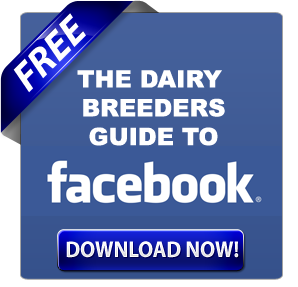Trump’s dairy battle heats up! As tariffs loom, Canada’s supply management system faces its toughest test yet. With U.S. farmers crying foul and Canadian producers digging in, milk has become a weapon in international politics. What’s at stake for farmers and consumers on both sides of the border?
Summary:
U.S. President Donald Trump has criticized Canada’s dairy supply management system, claiming it blocks American dairy products with high import tariffs and is unfair to U.S. farmers. Both countries have imposed new tariffs on each other’s goods, impacting a $1.2 billion dairy trade at risk and causing market uncertainty for farmers. While the U.S. sees it as a chance for better market access, Canadian farmers fear the loss of the system that ensures stability. With the Canada-United States-Mexico Agreement up for review in 2026, there’s a possibility of changes to Canada’s dairy policies as tensions continue to grow.
Key Takeaways:
- Canada’s supply management system in the dairy sector remains a point of contention in U.S.-Canada trade relations.
- Trump has criticized Canadian dairy policies, labeling them as unfair to American farmers and threatening tariffs.
- U.S. dairy farmers seek increased market access amidst challenges of oversupply and low prices.
- Canadian farmers are concerned about maintaining stability and income through the existing system.
- Reforms to the system are debated, with calls for modernizing to remain competitive while protecting domestic interests.
- The Canada-United States-Mexico Agreement (CUSMA) and TRQs are pivotal in ongoing trade negotiations.
- Both nations face significant trade tensions, impacting future relations and market dynamics.

The ongoing clash between President Donald Trump and Canada’s dairy supply management system has reignited a long-standing contentious debate between the two nations. Since returning to the White House in 2025, Trump has intensified his criticism of Canada’s dairy policies, sparking a heated political debate.
Trump’s Renewed Attack
Trump’s recent comments have focused on what he perceives as Canada’s unfair trade practices in the dairy industry. These include high import taxes and strict production quotas that limit American dairy exports to Canada. He argues that Canada’s high import taxes create barriers that significantly hinder the sale of American dairy products in Canada, thereby placing U.S. farmers at a severe disadvantage in the Canadian market.
“Canada charges the U.S. a 270% tariff on Dairy Products! They didn’t tell you that, did they? Not fair to our farmers!” Trump tweeted.
The President has even threatened to impose tariffs on Canadian goods if the dairy system isn’t reformed. This renewed pressure comes as the Canada-United States-Mexico Agreement (CUSMA) is set for formal review in 2026, with discussions likely to ramp up in 2025.
Recent Developments Under Trump
Since taking office in January 2025, Trump has made several moves affecting trade and agricultural policies:
- Executive Orders: Trump has issued a series of executive orders, including those affecting trade policies, in what he has described as a “shock and awe” campaign. He has mandated reviews of all trade agreements to verify their fairness to the U.S.
- CUSMA Renegotiation: Trump seeks to renegotiate the CUSMA, which could threaten Canada’s dairy protections. He asserts that the current agreement inadequately supports U.S. farmers.
- Tariff Implementation: On February 2, 2025, the U.S. and Canada imposed 25% tariffs on each other’s agricultural imports, significantly impacting the $1.2 billion annual dairy trade.
- Further Escalation: On February 9, 2025, Trump announced he would unveil a 25% tariff on all steel and aluminum imports into the United States.
Impact on the Canadian Dairy Industry
The renewed pressure from the Trump administration, which threatens changes to the dairy system, is causing concern in Canada’s dairy sector:
- Uncertainty: Canadian dairy farmers are worried about potential changes to the system that could threaten their livelihoods. They are also increasingly concerned about their ability to stay competitive in a market flooded with U.S. dairy products.
- Policy Challenges: Canada’s recent Bill C-282, aimed at protecting supply management from trade deal concessions, may face challenges under increased U.S. pressure. This law was meant to prevent Canada from giving up more of its dairy market in trade talks, but Trump’s administration is pushing hard against it.
- Retaliatory Measures: On February 2, 2025, Canada implemented retaliatory measures by imposing tariffs on $30 billion worth of U.S. imports affected by tariffs. Additionally, Canada is preparing to impose more tariffs on $125 billion later this month.
Canadian Government’s Response
The Canadian government and the dairy industry have jointly vowed to protect the supply management system through increased lobbying efforts, strategic alliances with other dairy-producing nations, and advocacy for policy reforms safeguarding domestic dairy producers. Foreign Affairs Minister Mélanie Joly stated, “We have always said we would protect supply management. The Liberal Party put supply management in place, and we protected it during the last (free-trade) renegotiation. We’ll be there to protect it.”
The Supply Management System: A Closer Look
Canada’s supply management system operates through strict production quotas and high import tariffs. Here’s how it works:
- Controlling Production: The Canadian Dairy Commission (CDC) determines how much milk Canada needs and instructs farmers on production levels, helping to keep prices steady.
- Setting Prices: The CDC sets minimum milk prices to ensure farmers earn a sustainable income regardless of market fluctuations.
- Limiting Imports: Canada imposes high tariffs on imported dairy products, including 298% on butter. This makes it difficult for foreign dairy companies to compete with Canadian products.
Impact on Consumers
The dairy system in Canada brings both benefits and drawbacks to consumers. While Canadians may experience higher prices than Americans, they also enjoy a consistent milk supply, support local dairy farmers, and benefit from stringent quality control standards. However, limited access to foreign dairy products may restrict consumer choices and variety.
- Higher Prices: Canadians generally pay more for milk and cheese than Americans. For example, a family in Canada might spend $100 more per year on dairy products than a similar family in the U.S.
- Steady Supply: The system ensures a steady milk supply, regardless of price fluctuations in other countries. Canadians don’t have to worry about milk shortages.
- Limited Variety: Due to the import tariffs on foreign dairy, Canadians may have limited access to foreign cheeses and other dairy products in local stores.
Recent Developments and Trade Tensions
Under CUSMA, Canada committed to providing greater access to U.S. dairy exports through 14 U.S.-specific tariff-rate quotas (TRQs). However, the United States has launched multiple disputes claiming Canada is intentionally bottlenecking U.S. imports through these TRQs.
A USMCA dispute panel sided with Canada in the latest tiff over market access in 2023, leading to disappointment from the U.S. Dairy Export Council.
To provide insights into trade dynamics, the following table presents information on the import volumes and fill rates for select dairy products under CUSMA for the 2023/24 dairy year.
| Product | Import Volume | Fill Rate |
| Cheese | 5,457 tonnes | 52.5% |
| Fluid Milk | 13,697 tonnes | 32.9% |
| Cream | 4,465 tonnes | 51.0% |
| Butter | 3,048 tonnes | 81.3% |
| Milk Powder | 327 tonnes | 56.9% |
Source: Global Affairs Canada
This table illustrates the current state of dairy imports under CUSMA, showing that while some products like butter have high fill rates, others like fluid milk are significantly under their quota. This data provides context for the ongoing trade tensions and the potential for increased U.S. dairy exports to Canada.
Looking Ahead
As tensions rise, American and Canadian dairy farmers are at a crossroads. The coming months are poised to witness intense negotiations and debates as both countries grapple urgently with key issues such as tariff rates, market access, and dairy product quotas in the future of the dairy trade. With the CUSMA review set for 2026 and Trump’s aggressive stance on trade, the dairy industry on both sides of the border faces an uncertain future.
The battle over Canada’s dairy system extends beyond milk. It encompasses a significant struggle over trade, livelihoods, and the future of farming industries, reflecting a multifaceted challenge. As negotiations progress, it will be paramount for both nations to navigate the delicate task of balancing safeguarding domestic industries, ensuring fair competition for local producers, and promoting equitable international trade agreements that benefit all stakeholders involved.
Learn more:
- Trump vs Biden: Who is the Best Presidential Choice for Dairy Farmers?
- Canada’s Ongoing Dairy Trade Dispute: Non-Compliance with Rules Continues, Says Trade Minister
- North American Dairy Trade: US-Mexico Relations Strengthen Amid Canada’s Growing Trade Tensions
 Join the Revolution!
Join the Revolution!
Bullvine Daily is your essential e-zine for staying ahead in the dairy industry. With over 30,000 subscribers, we bring you the week’s top news, helping you manage tasks efficiently. Stay informed about milk production, tech adoption, and more, so you can concentrate on your dairy operations.







 Join the Revolution!
Join the Revolution!



